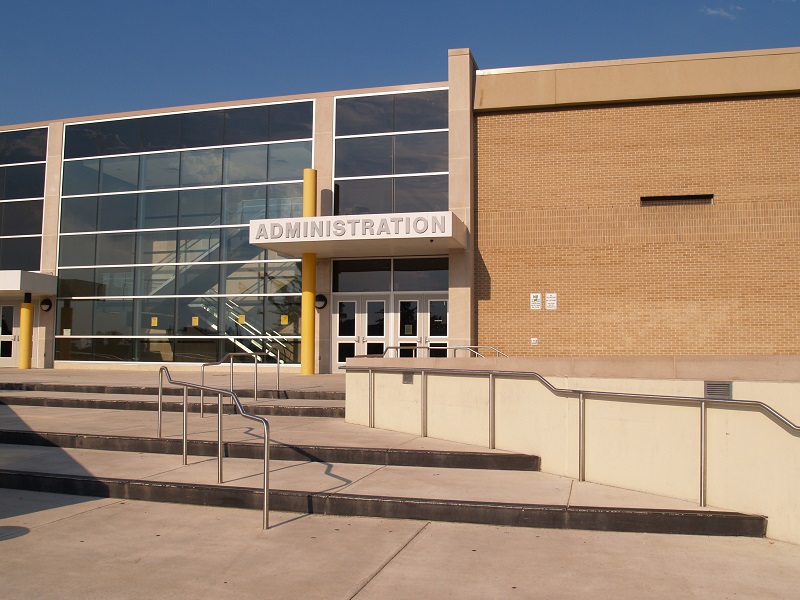As schools implement their screening and entry management protocols, it is important to take into consideration how managing the staff and student entry takes shape and the logistical issues to consider in a COVID-19 environment.
First, we must recognize that no one wants to physically stand in line. Creating a process that allows for the fewest friction points as possible is key to the sustainability of this sort of safety program. Another key factor in a successful program is to divide the workload and automate the process to its fullest capacity. To that point, there is a requirement to validate and verify the process so we can implement a high level of compliance.
It’s also important to recognize that there is a physical process of getting students and staff into the building, while following the current health officials’ guidelines; social distancing, face coverings, staying at home when you are sick, etc. Adopting a pre-certification process can help with that by informing parents and staff to stay home when they meet established criteria; informing staff and students when it is safe to return after an exposure or they stayed home sick; etc. This effectively culls out those who should be staying home so they don’t show up to school in the first place.
Technology reduces the human error rate of data collection and analysis. Technology also allows for the quick identification of pre-tracing identification for those who may have potentially been exposed to someone who has the virus. A well-designed entry process allows you to accomplish all of your required tasks with as little disruption to your normal entry flow as possible. This well-designed process also accounts for the situations caused by confusion, non-compliance, or inability to complete the process.
It is important to recognize that most schools are being required to conduct some sort of screening process; whether that process is conducted manually or with the use of technology, the schools will still be required to complete the same tasks. It is just a matter of who completes those tasks, how valid is the process, how do you collect and validate the data, and how do you retrieve the data in a manner that is actionable in a reasonable time frame.
Visualize a manual screening process: students will take home a health screening survey form every day to their parents to have them complete it the next morning before the child leaves for school. The child stands in a line to return their surveys to ensure they can enter; you can’t have the teachers collect them because they have entered the protective zone. Several staff members will have to have the student hand their surveys to the staff member, once they find in their book bag if they haven’t lost it, for the staff member to verify it was completed properly. Then the staff member will have to find the student’s name on a roster to check off to record they are cleared to enter, then stack the surveys in some sort of order to retrieve at a later time should that be necessary. All this being completed while 200-300 other students are waiting “patiently” for their turn.
Assuming it was completed without any issues, this process is likely to take two to three minutes per student to do this properly. If it is taking less time than that, your verification process is not looking at every question and determining whether it was completed properly and if the answers listed give the student or staff the ability to enter the building, it likely is not a valid process.
While that doesn’t seem too bad for one student until you do the math; 2 minutes per student, for 200 students and 50 staff members is 500 minutes of verification time, which equates to 8.3-man hours. This means it would take one person 8.3 three hours to complete the verification process. If you wanted to get everyone into the building in a reasonable time frame, say 30 minutes, it would require you to have 17 staff members conducting this process.
While a process using technology, this same process can be as quick at 3 seconds. But using 5 seconds to complete a scan of a digital badge on a smartphone, that same scenario would look like this: 12 students or staff could be scanned every minute. This would allow 250 students and staff to complete the process in approximately 21 minutes using one scanning station.
A screening process which includes technology as part of the solutions allows parents and staff to complete their tasks before they arrive at school. The data generated as a result is collected and categorized based on the potential need to retrieve it often. Once staff and students arrive at school, they need to verify they have completed their surveys and that they are eligible to come to school.
With a technology solution like CrisisGo’s Safety iPass, this can be accomplished in a few seconds, allowing for rapid transition from outside to inside. The added benefits to this verification process is that it increases compliance, reducing the need to complete the manual version of this process. Learn more about how Safety iPass can help your district address the complications of safely returning to school.












(1)